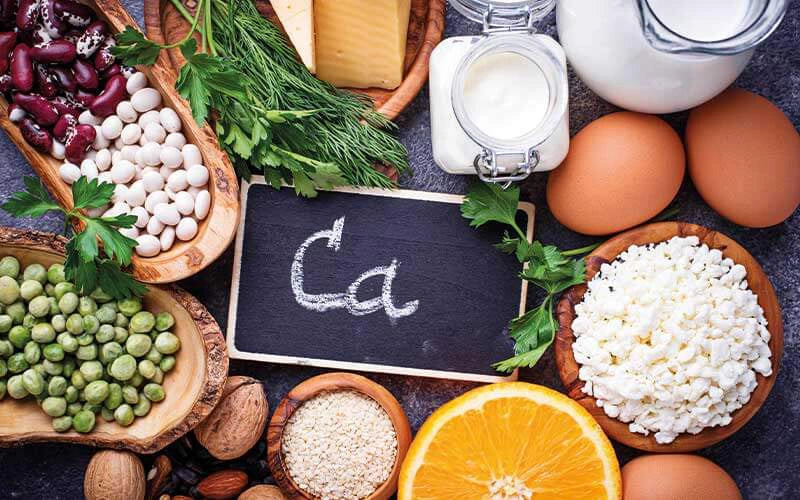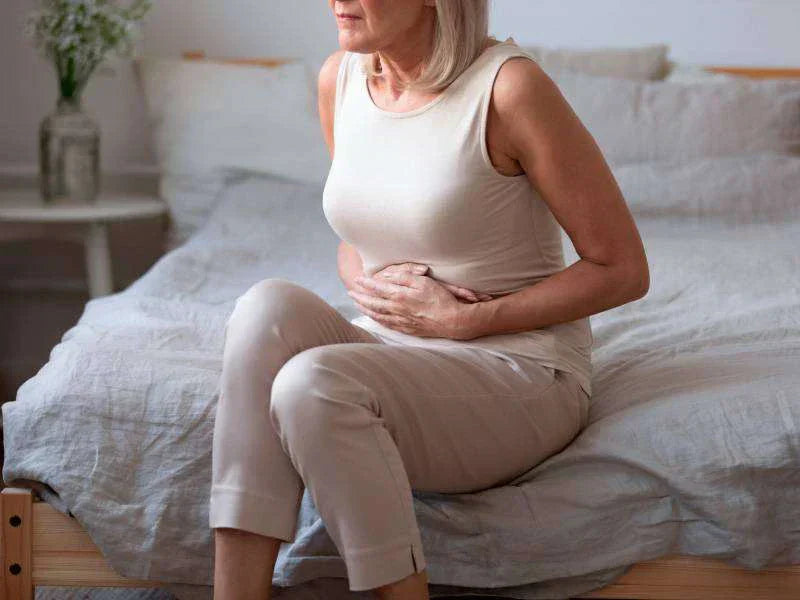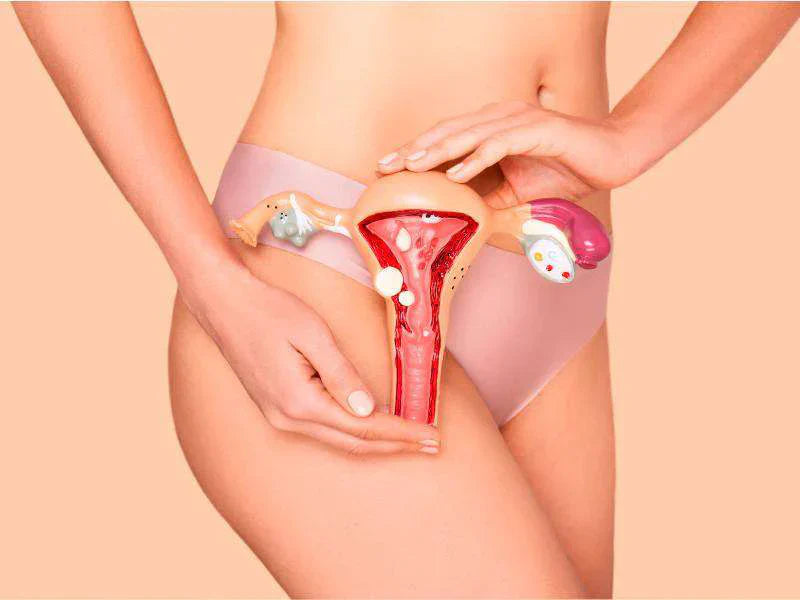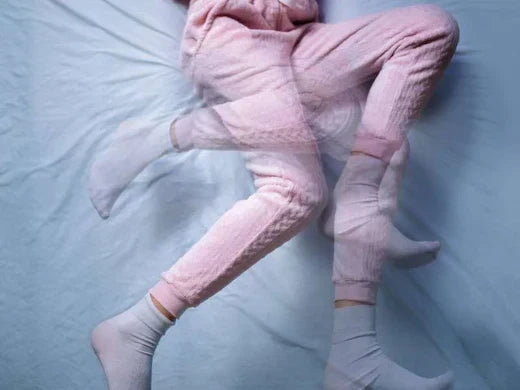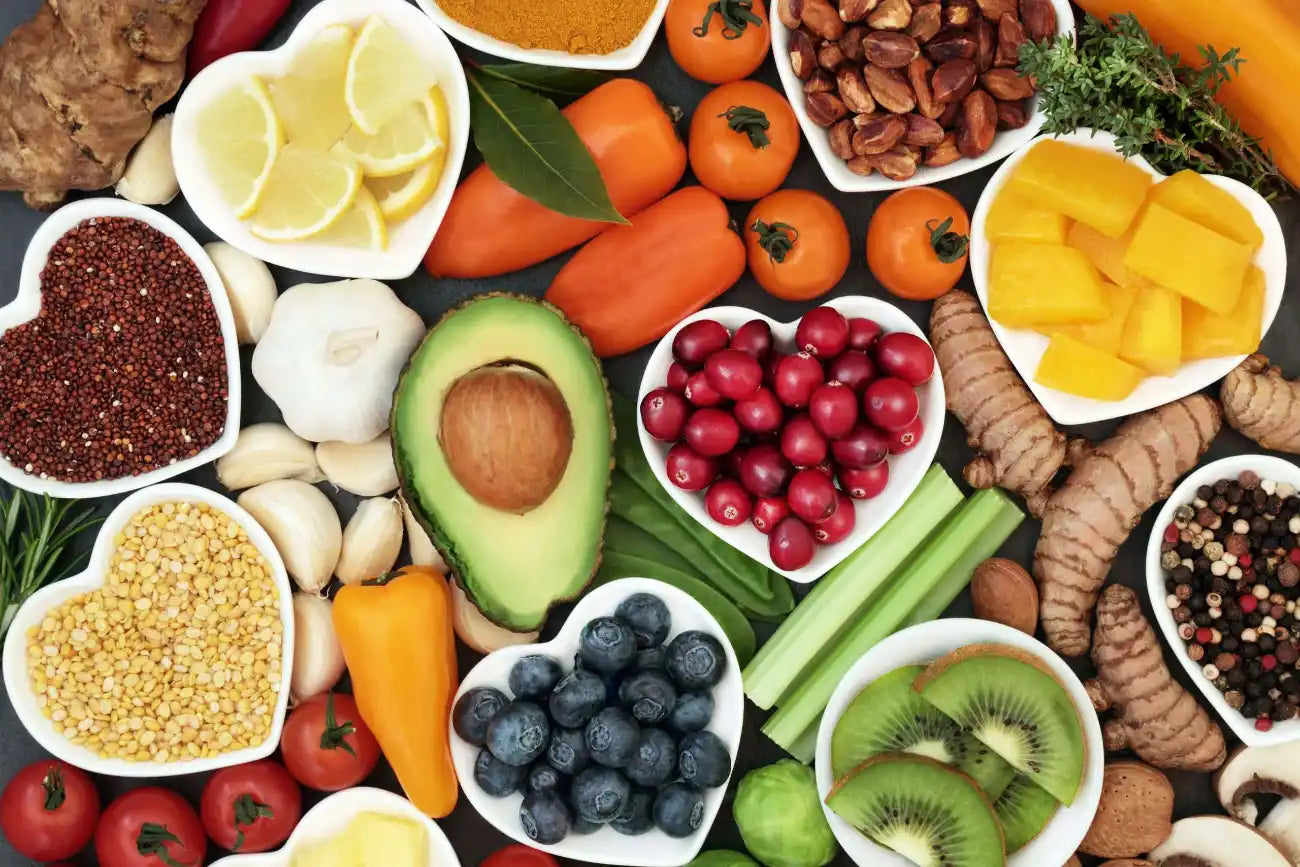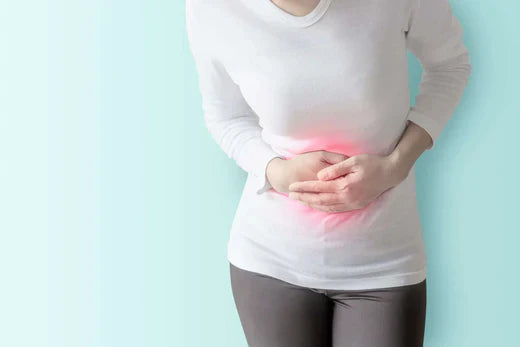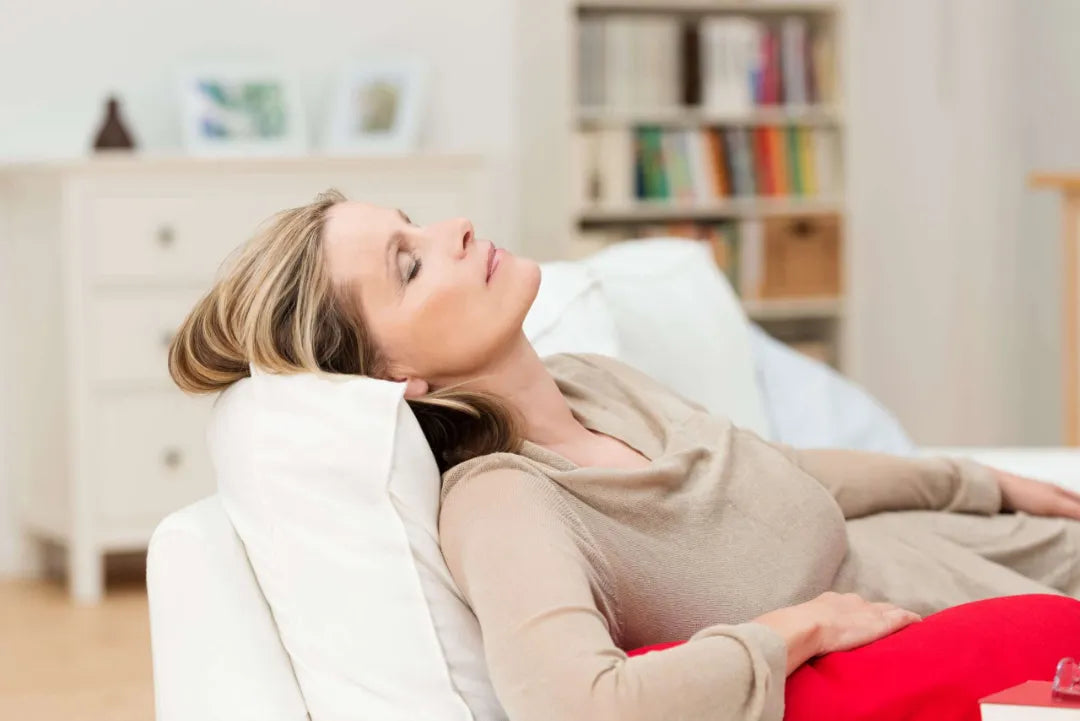Calcium and vitamin D are two important micronutrients for maintaining healthy bones and teeth. (1,2,3) Here we’ll explain the importance of them during the menopause, where to find them and recommendations for how you can incorporate them into your routine.
Calcium and vitamin D: role and usefulness
Both micronutrients are necessary for the development of the body. Deficiency can lead to general health problems. Calcium is especially important for (2):
- Growth and development of bones and teeth.
- Regulating the contraction of muscles. This means that it is involved in, for example, the beating of the heart, the movement of the intestines and the movement of muscles when walking.
- Blood clotting.
While Vitamin D is necessary for (1,3):
- Regulating the amount of calcium and phosphorus in the body.
- Promoting the absorption of calcium in the intestine.
- Contributing to the formation of strong bones and teeth.
- Regulating the growth of cells
- Functioning of the immune system, muscles and glucose utilisation and storage.
Why are calcium and vitamin D so important in menopause?
During the menopause women are prone to developing certain conditions. One such change is the loss of bone density which can lead to osteoporosis. This, in turn, increasing the risk of fractures. (4,5).
Hormone replacement therapy, among other things, can help maintain or protect bone health. However, sufficient calcium and vitamin D are also necessary, as these are the nutrients responsible for maintaining bone health. Not smoking, not drinking too much alcohol and regular physical activity are other important habits to maintain bone health. (5).
Calcium and vitamin D supplements are often prescribed during menopause, perimenopause, early menopause or postmenopause. But these are not always necessary, as they can be obtained through healthy habits. It’s important to consult your doctor before taking any supplements. (5).
What foods contain calcium and vitamin D?

The skin produces vitamin D after exposure to the sun. That’s why for most people they manage to get sufficient amounts of this vitamin during the summer months. However, you can also obtain it from your diet. Foods with vitamin D include (1,3):
- Oily or fatty fish, such as salmon, sardines, and mackerel.
- egg yolks
- red meat
- liver
- Fortified foods such as butter, vegetable drinks or breakfast cereals.
Calcium can be obtained from (2):
- Milk.
- Dairy products, such as yoghurt and cheese.
- Nuts, such as walnuts and almonds.
- whole grain cereals
- soybeans and soy products, such as tofu
- broccoli and kale
- canned sardines with bones.
Recommendations for inclusion in the diet
Sufficient amounts of calcium and vitamin D can be obtained from a balanced diet. Some ideas for increasing the intake of these nutrients include (4):
- Include plenty of fruit and vegetables in your diet.
- Drink a glass of milk every day.
- Add a matchbox sized piece of cheese to your recipes every day.
- Prepare a healthy, calcium rich snack, such as a milk-based pudding or a cup of yoghurt with fruit.
- Include fatty fish in your meals on a weekly basis.
These are essential and much needed nutrients during menopause. With proper diet and other healthy habits it is possible to get adequate amounts of both micronutrients. However, some people may require supplements.
We recommend seeking medical advice before taking any supplements, so you can be sure you are getting what you need in the required amount. Learn more about menopause and some of the problems that can accompany it, such as slow metabolism and blurred vision here.
References
- National Health System – NHS. Vitamin D.
. 2020 Available from https://www.nhs.uk/conditions/vitamins-and-minerals/vitamin-d/
- National Health System – NHS. Calcium.
. 2020 Available from https://www.nhs.uk/conditions/vitamins-and-minerals/calcium/
- National Institutes of Health – NIH. Vitamin D.
. 2022 Available from https://ods.od.nih.gov/factsheets/VitaminD-HealthProfessional/
- British Dietetic Association – BDA. Menopause and diet: Food Fact Sheet.
. 2022 Available from https://www.bda.uk.com/resource/menopause-diet.html
- Hull University Teaching Hospitals NHS. Menopause and Natural ways to Cope.
. 2018 Available from https://www.hey.nhs.uk/patient-leaflet/menopause-and-natural-ways-to-cope/
You May Also Like

JOIN US AND GET 10% OFF
Sign up to our newsletter to access free resources, advice and support.



